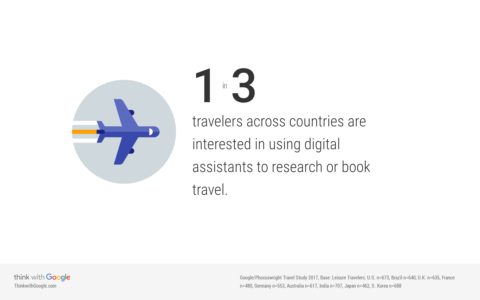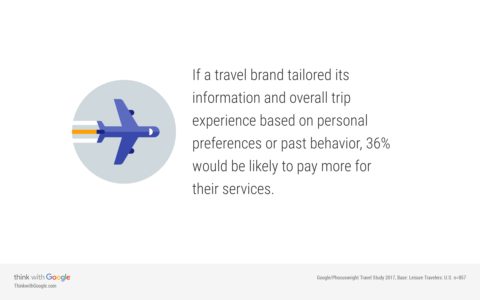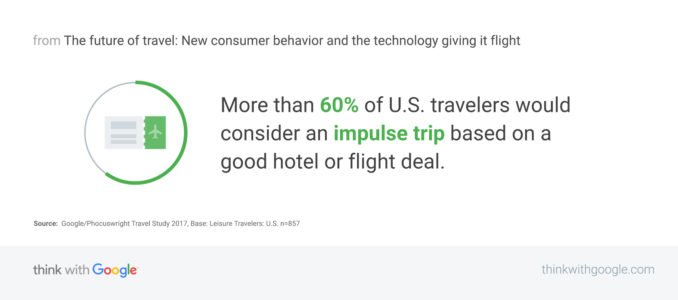
6 stats from Google Travel’s latest missive on helping travelers ‘ in the age of assistance’
By cameron in Uncategorized
Google Travel has come up with a new term: ‘the age of assistance.’ This term doesn’t refer to traditional customer service, but the multi-layered communications approach required by nearly every brand with customers.
Of course, this type of assistive customer service is much more important in a complex business like travel. Each individual has their own preferences about how, where, and when they want communication — and these preferences shift depending on the circumstances. For example, a passenger wants more frequent updates during a delay than when everything is on time.
Here’s a quick roundup of Google Travel’s latest.
Clever communication makes for a better customer experience
Technology is to blame for the channel proliferation that faces consumer-facing brands. It is also the solution to delivering best-in-class customer service across channels. Brands can’t fight the fact that there are more communications channels then ever before — they can only meet their customers where they are.
Once that happens, customers are more loyal and more satisfied. Sure, it’s overwhelming at first, but the brands that thrive in this ‘age of assistance’ are those that navigate communications using a strong strategic foundation coupled with targeted tactics.
The digital assistant has become the way many brands offer a tailored user experience. And this growth is set to continue, per Google:
It’s also important to remember that voice-enabled digital assistants are only as good as the programming that gives the assistants the ability to connect the request to the correct information.
Travelers are not interested in using stunted or ‘machine-like’ conversation with an assistant. Rather than trigger words, there’s a clear and obvious preference for natural language. After all, what use is the machine if you can’t just talk to it naturally?
Making money on personalization
A majority of travelers want experiences tailored to them, using personal preferences or past behavior to influence the experience. This is something that many brands have trouble with, because not every traveler wants their data used for personalization.
The key is finding the balance that allows the brand to successfully deliver personalization to those who want it — especially since the majority of travelers do, in fact, want some level of personalization.
Personalizing the travel experience is vital — and not just because the traveler wants it. Oliver Heckmann, Google’s VP of engineering for travel and shopping, says this has become a standard expectation among many travelers:
“People don’t just want faster access to information—they want better, more personalized experiences. If I were to pull out my phone and search for a nearby hotel or restaurant, I’d expect the information I find to be tailored to me based on my location, time of day, and maybe even past interests.”
Personalization also makes more money for brands, as travelers are apt to spend more money on travel services. There’s a real ROI in personalization.
Remembering the last-minute traveler
The last-minute traveler has unique needs. Things like a rapid booking flow and an instant connection to customer service can make or break a last-minute traveler’s decision to book a hotel. This is something that is ever more imperative, as Google highlights in this graphic:
To close out the view into today’s traveler, another stat jumps out: the number of people that would splurge on an impulsive trip based solely on a last-minute deal. These are all important inputs for travel brands looking to understand how to segment and market to specific subsets of their travelers.
Photo by Fikri Rasyid on Unsplash
![]()






